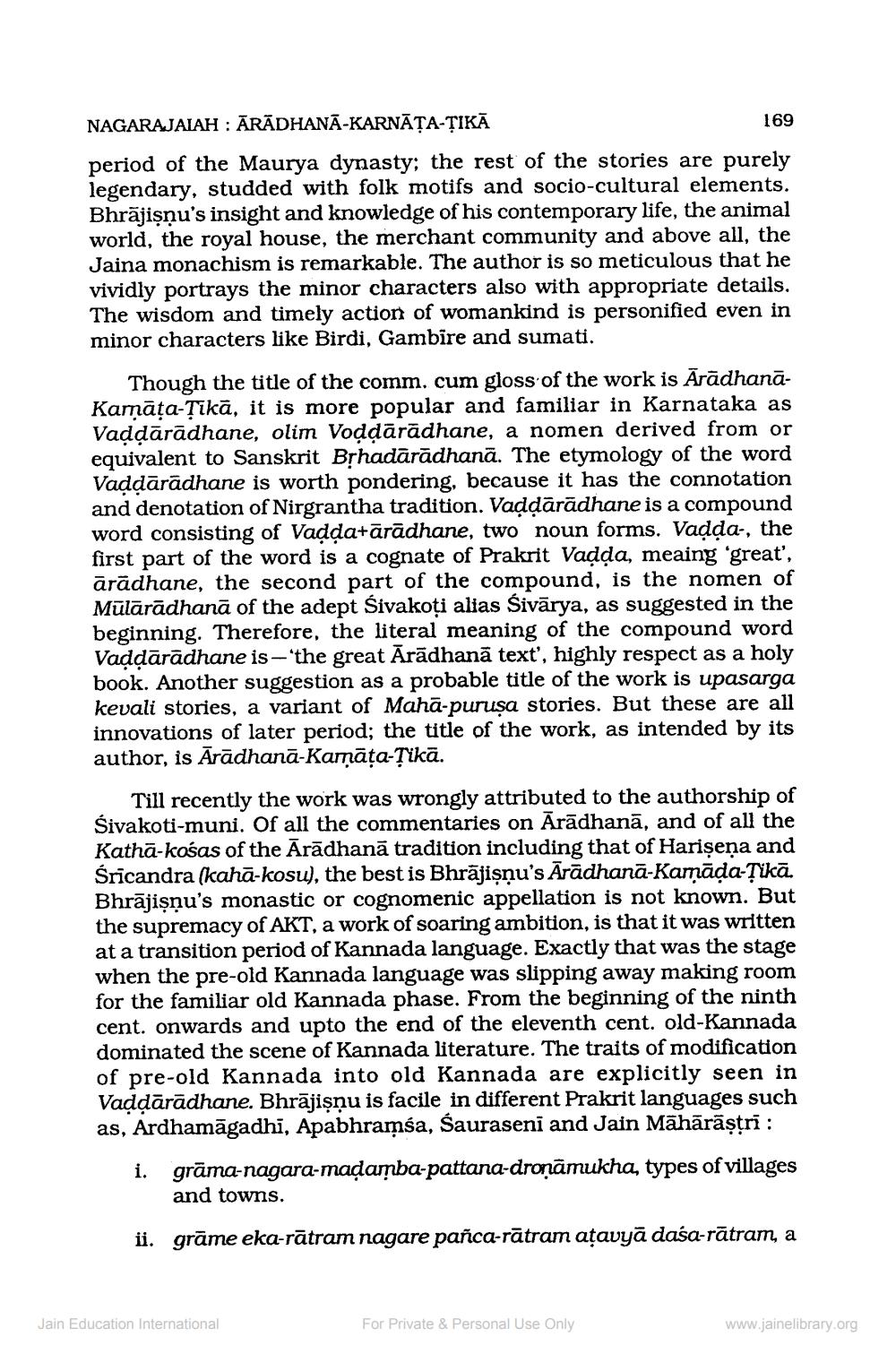________________
NAGARAJAIAH: ĀRĀDHANA-KARNĀŢA-ṬIKĀ
period of the Maurya dynasty; the rest of the stories are purely legendary, studded with folk motifs and socio-cultural elements. Bhrājiṣṇu's insight and knowledge of his contemporary life, the animal world, the royal house, the merchant community and above all, the Jaina monachism is remarkable. The author is so meticulous that he vividly portrays the minor characters also with appropriate details. The wisdom and timely action of womankind is personified even in minor characters like Birdi, Gambire and sumati.
169
Though the title of the comm. cum gloss of the work is ĀrādhanāKamāṭa-Tikā, it is more popular and familiar in Karnataka as Vaḍḍārādhane, olim Voḍḍārādhane, a nomen derived from or equivalent to Sanskrit Bṛhadārādhanā. The etymology of the word Vadḍārādhane is worth pondering, because it has the connotation and denotation of Nirgrantha tradition. Vadḍārādhane is a compound word consisting of Vaḍda+aradhane, two noun forms. Vadda-, the first part of the word is a cognate of Prakrit Vadda, meaing 'great', ārādhane, the second part of the compound, is the nomen of Mulārādhanā of the adept Śivakoti alias Šivarya, as suggested in the beginning. Therefore, the literal meaning of the compound word Vaḍḍārādhane is-'the great Ārādhanā text', highly respect as a holy book. Another suggestion as a probable title of the work is upasarga kevali stories, a variant of Maha-purusa stories. But these are all innovations of later period; the title of the work, as intended by its author, is Ārādhana-Kamāṭa-Țikā.
Till recently the work was wrongly attributed to the authorship of Śivakoti-muni. Of all the commentaries on Aradhana, and of all the Katha-kosas of the Aradhana tradition including that of Harisena and Śricandra (kahā-kosu), the best is Bhrājiṣṇu's Aradhana-Kamāḍa-Ṭikā. Bhrājiṣṇu's monastic or cognomenic appellation is not known. But the supremacy of AKT, a work of soaring ambition, is that it was written at a transition period of Kannada language. Exactly that was the stage when the pre-old Kannada language was slipping away making room for the familiar old Kannada phase. From the beginning of the ninth cent. onwards and upto the end of the eleventh cent. old-Kannada dominated the scene of Kannada literature. The traits of modification of pre-old Kannada into old Kannada are explicitly seen in Vadḍārādhane. Bhrājiṣṇu is facile in different Prakrit languages such as, Ardhamāgadhi, Apabhramsa, Sauraseni and Jain Mahārāṣṭrī:
i. grāma-nagara-maḍamba-pattana-dronāmukha, types of villages
and towns.
ii. grāme eka-rātram nagare pañca-rātram aṭavya dasa-rātram, a
Jain Education International
For Private & Personal Use Only
www.jainelibrary.org




